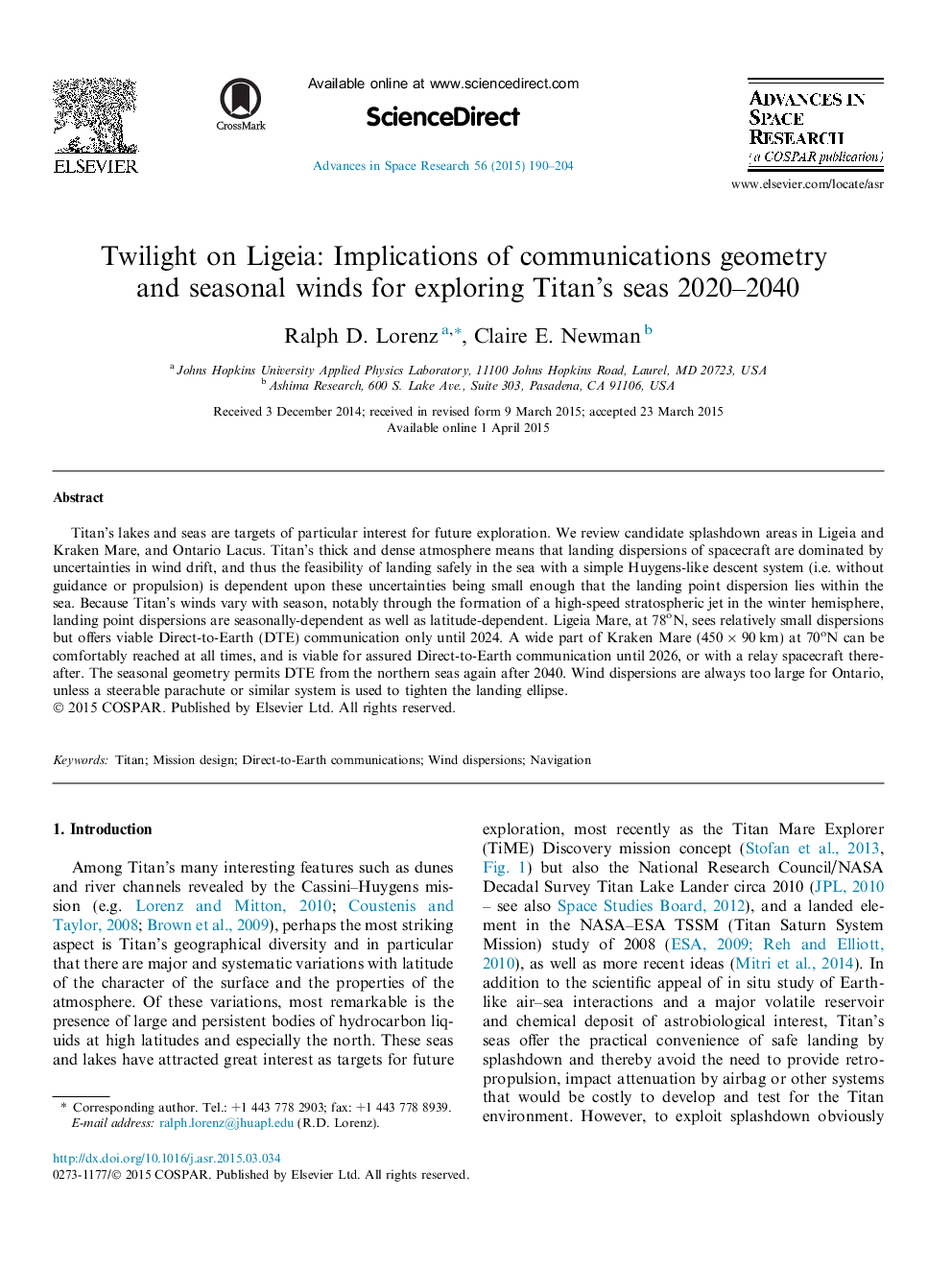| Article ID | Journal | Published Year | Pages | File Type |
|---|---|---|---|---|
| 1763793 | Advances in Space Research | 2015 | 15 Pages |
•Evaluates visibility and downlink Direct-to-Earth (DTE) from Titan’s seas.•Examines landing dispersions, noting seasonal and latitudinal variation in wind.•Finds DTE missions to Kraken, Ligeia possible until ∼2026, and after 2040.•Considers steerable parachutes for delivery to smaller Ontario Lacus.
Titan’s lakes and seas are targets of particular interest for future exploration. We review candidate splashdown areas in Ligeia and Kraken Mare, and Ontario Lacus. Titan’s thick and dense atmosphere means that landing dispersions of spacecraft are dominated by uncertainties in wind drift, and thus the feasibility of landing safely in the sea with a simple Huygens-like descent system (i.e. without guidance or propulsion) is dependent upon these uncertainties being small enough that the landing point dispersion lies within the sea. Because Titan’s winds vary with season, notably through the formation of a high-speed stratospheric jet in the winter hemisphere, landing point dispersions are seasonally-dependent as well as latitude-dependent. Ligeia Mare, at 78oN, sees relatively small dispersions but offers viable Direct-to-Earth (DTE) communication only until 2024. A wide part of Kraken Mare (450 × 90 km) at 70oN can be comfortably reached at all times, and is viable for assured Direct-to-Earth communication until 2026, or with a relay spacecraft thereafter. The seasonal geometry permits DTE from the northern seas again after 2040. Wind dispersions are always too large for Ontario, unless a steerable parachute or similar system is used to tighten the landing ellipse.
